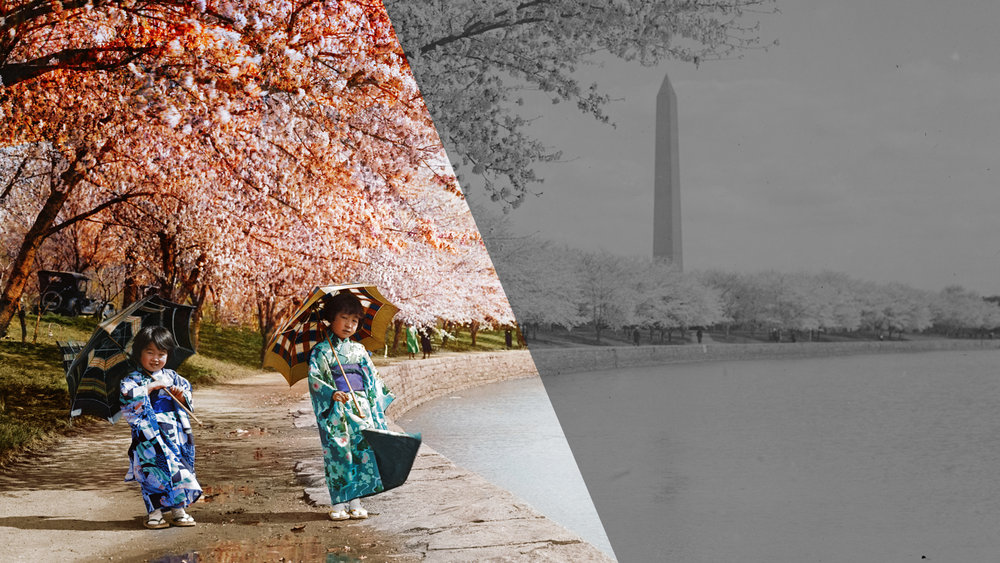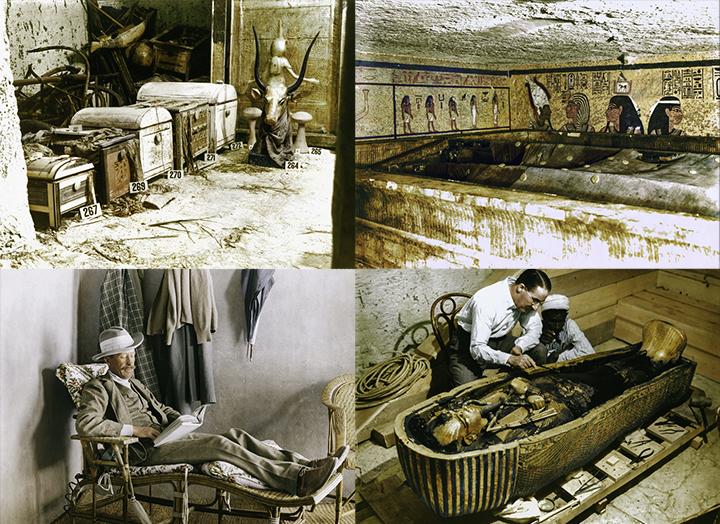by Shannon Polugar
The advent of and exponential popularity of digital photography has meant the loss of numerous film types and color processes. While some can be recreated through the digital process, they cannot be truly replaced. Paul Simon’s lyric, “Momma don’t take my Kodachrome…” may have come about three decades early, but perhaps the song is more relevant now than it was in 1973.
The color photography process as we know it is less than half as old as photography itself. There is more than a hundred years of history documented in photographs that are in black and white, and other monochromatic tones. Hand-painted photographs were popular, but to the modern eye they are far from realistic.
“Two hand-painted stereoview photos of the same group of children in Japan, 1904. Despite being two images taken in series of the same scene, they are painted differently.”]
Our minds have become accustomed to seeing the world of the early photograph in black and white. It may be nostalgic, and we may hold the tonal qualities of the monotone images as something to emulate, but the argument can be made that it disconnects us from the realities that existed in those photographs.
Artist Jordan Lloyd takes these old photographs and brings them into the familiar reality that is how we see our everyday world: color. As Lloyd says, “We don’t live in a black and white world, neither did they!”
“A split view of a photo of the daughters of the secretary of the Japanese Embassy, in Potamac Park in Washington D.C. from 1925 colorized by Jordan Lloyd.”
Lloyd goes beyond simply coloring the photographs. There is extensive research put into each photograph, ensuring at the very least, as in the case with the girls in Potamac Park, that the colors are accurate for the time period, and to the extreme end with the colorization of Harry Burton’s photos from 1922-1925 of the King Tut excavation, careful examination of field notes and locating modern photos of the objects to color match.
“Four colorized photos from the King Tut excavation, commissioned to be colorized by the original photograph’s owner, The Griffith Institute, for ‘The Discovery of King Tut’ exhibition in NYC."
What is different about colorizing photographs now versus when they were taken, such as the stereoview example? Lloyd states that today’s technology allows a level of realism that could not previous be replicated, and that with the internet, global access to historical documents assist in the detailed research required to “provide authenticity to the original historical document.”
There is criticism though of this type of work. Critics call the works ‘revisionist’ and disrespectful to the original artists, who are long gone and have no say. Lloyd counters though that his works are not meant to be viewed out of context, they are supplements to the original – not a replacement. He also avoids colorizing photos that were taken in black and white for artistic intent, and focuses on images that were taken for “editorial purposes of historical prosperity,” as had color been an option, these photos would have likely been in color. Even Burton tried, though was unsuccessful, to make color autochrome photos of the excavation. Color was wanted, but not available.
It is my own personal feeling that when we see these old photographs in color, reasonably represented as they would have been seen by the people who lived them, that it brings us closer to the feelings and reality that would have been when the photograph was taken. There are lessons there too for how we work between choosing color and black and white photography now: while many view black and white photography as more pure or artistic, there is much to be said about how color attaches us to the ‘present’ of the photograph.
https://www.pixartprinting.co.uk/content/controversial-art-colourising-past/

![“Two hand-painted stereoview photos of the same group of children in Japan, 1904. Despite being two images taken in series of the same scene, they are painted differently.”]](https://images.squarespace-cdn.com/content/v1/55ccfc39e4b0ff38cd532d8c/1508188364094-NW3C7D8H4SMUKCUTLFXI/handpaintedstero.jpeg)

